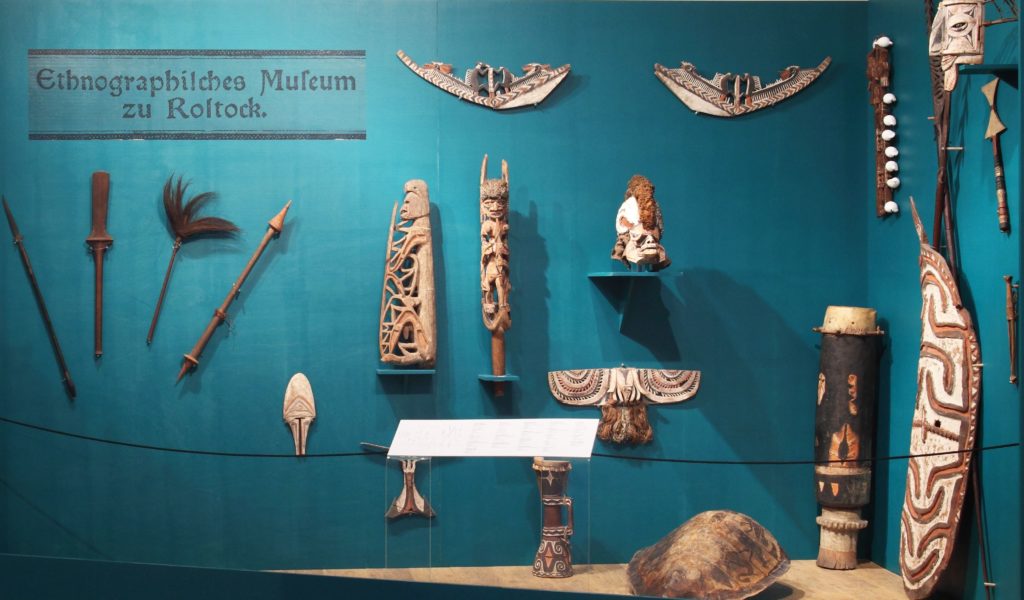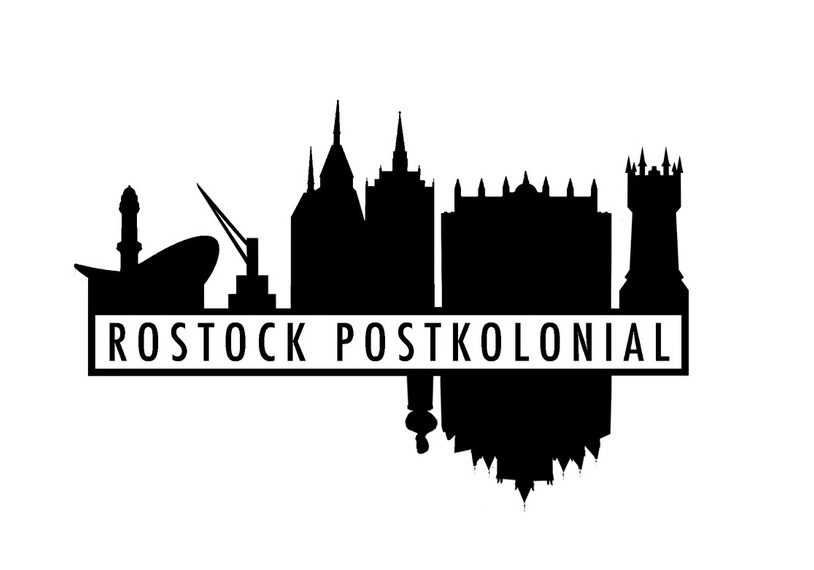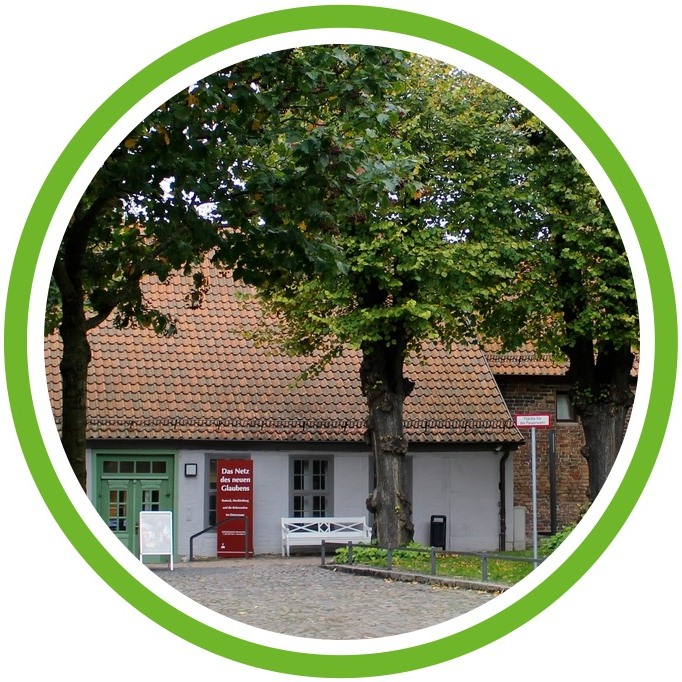Not in the mood for reading?
You can listen comfortably to all the information here and while exploring the region.
Ethnographic collections
In the 19th century lively collecting activities of objects from all over the world began. At the turn of the century it could be called a downright boom of collecting. Even if it seems like it was primarily in the interest of research, this collecting of objects cannot be separated from the colonial zeitgeist. This becomes particularly obvious with the racially oriented physical anthropology, which collected human skulls and bones. (You will find more on this later at the station “Medicine”) The educational purpose and propaganda for (the ‘right’ of) German colonies walked along side each other at the ethnographic museum in Rostock and attested to colonial heritage even in educational institutions.
Rostock’s ethnographic collection
The ethnographic museum of Rostock was founded in 1905. This goes back to the instigation by Rostock’s division of the German Colonial Society, which counted up to 100 members. They pursued the objective to “encourage the enthusiasm towards the German colonial empire” (Karge 2003, p.40) among the population of the city. At first they exhibited some kind of a cabinet of rarities ( loc. cit., p 42.), where visitors could view items, which were deemed to be exotic, foreign or colorful. Weapons, clothes, hunting trophies and many more from the African and American continent, China and the region of Oceania could be visited.

The museum experienced a changing history with lots of relocations. At first it was established at the Steintor in the Steinstraße 2. The museum moved into a residential house in the Koßfelder Straße 6 in 1908. In the entrance of the first floor were two figures, presenting a black person and a Native American in a stereotypical way. Because of the lack of space, the museum had to move again, this time into the Friedrich-Franz-Straße, nowadays the August-Bebel-Straße. The most recent location was the old water tower of Rostock. Many members of the university, who were also members of Rostock’s division of the German Colonial Society, participated in parts of the management of the division.
Because of World War II many objects were privately stored in 1942 and after the end of the war plundered by unknown persons. A small part of the remaining pieces is kept in the Kulturhistorisches Museum (Historical-cultural Museum) of Rostock. It contains approximately 150 objects originating in Oceania/Papua New Guinea. Another larger part of the collection was given to the Grassi-Museum für Völkerkunde (Grassi Museum for Ethnology) in Leipzig.

How can we remember today?
Postcolonial thoughts to the topic of cultural commemoration
“Objekte sind Zeugen, manchmal auch Auslöser historischer Begegnungen, die in der Kolonialära oft von Missverstehen, ungleichen Machtverhältnissen und Gewalt, aber auch von Widerstand und Subversion geprägt waren.”
Förster 2007, p. 327
Each exhibit, which was acquired in a colonial context, is to question, suggested the author Larissa Förster; and also the way the museum got hold of the object. This major demand on ethnological museums could turn out to be a central educational task for the present time and won’t happen without a willingness to make more financial resources available. The following questions should be answered: Which additional information is necessary in exhibitions so that the period of colonialism isn’t reproduced as a romantic nostalgia any longer? How can the widespread German desire for colonies by that time be expressed in a critical manner? How can we understand what it means that humans were deprived of their history by stealing their cultural assets and the knowledge of their origins; and storing and exhibiting such to a large extent in colonial-colored museums in Europe?
Is it even possible to pay reparations in light of this uncountable robbery? In the meantime, some reclamations from local groups and states are discussed in the media, for example the return of stolen human skulls to Namibia. Here too, we have to find an ethically sensitive and responsibly association with all persons involved, acknowledging the wrongdoings of colonialism they have been subjected to?. Inspired by People of Color and Black people different initiatives in Germany are dealing with these topics and especially reclamations. A publicly debated and very controversial example is the Humboldt-Forum in Berlin which is currently under construction. The construction site is located at the same place as the castle from Wilhelm the Second. The forum shall partly be restored to look like the castle, which can unleash a strongly representative effect. In the future, the forum shall accommodate the ethnological collection of the Royal Prussian Museum from Dahlem. Without sensibility for the wrongdoings of the colonialism, such a project won’t be successful.
You can inform yourself with help from different initiatives or think about engaging yourself. Meanwhile there are some associations which offer antiracism trainings in which you can practice with others to face and deal with such topics in a sensitive manner. For example, when an object in a museum attracts your attention, because you find it problematic, you can always write a letter. Many of the institutions are very grateful for feedback.
Sources and for reading
- *Larissa Förster, Köln – Berlin – Freiburg. Ethnologische Museen und ihr koloniales Erbe, in: Ulrich van der Heyden (Hg.), Kolonialismus hierzulande. Eine Spurensuche in Deutschland, Erfurt 2007, 324-327.
- Annelen Karge, Das Ethnografische Museum Rostock – kolonialer Geist in der Hansestadt, in: Reno Stutz (Hg.), Rostocker Blitzlichter 1900/2000, Rostock 1999, 215-218.
- Annelen Karge, Das Ethnografische Museum zu Rostock, in: Peter Danker-Carstensen (Hg.) Bürgerstolz 1841-1901-2003. Museum in Rostock (Kleine Schriften des Schifffahrtsmuseums Rostock 3), Rostock 2003, 40-47.
- Nils Seethaler, Vergangenheit, Gegenwart und Zukunft magazinierter ethnographischer Sammlungen in Deutschland am Beispiel des ehemaligen ethnographischen Museums von Rostock,in: Mitteilungen des Museumsverbandes in Mecklenburg-Vorpommern 19 (2010), 11-15.
- for listening: Debatte um Kolonialgeschichte. Komplexe Vergangenheit. Jürgen Zimmerer im Gespräch mit Anja Reinhardt, im Deutschlandfunk 24.09.17: http://www.deutschlandfunk.de/debatte-um-kolonialgeschichte-komplexe-vergangenheit.911.de.html?dram:article_id=396645; last accessed 30.11.17.*



